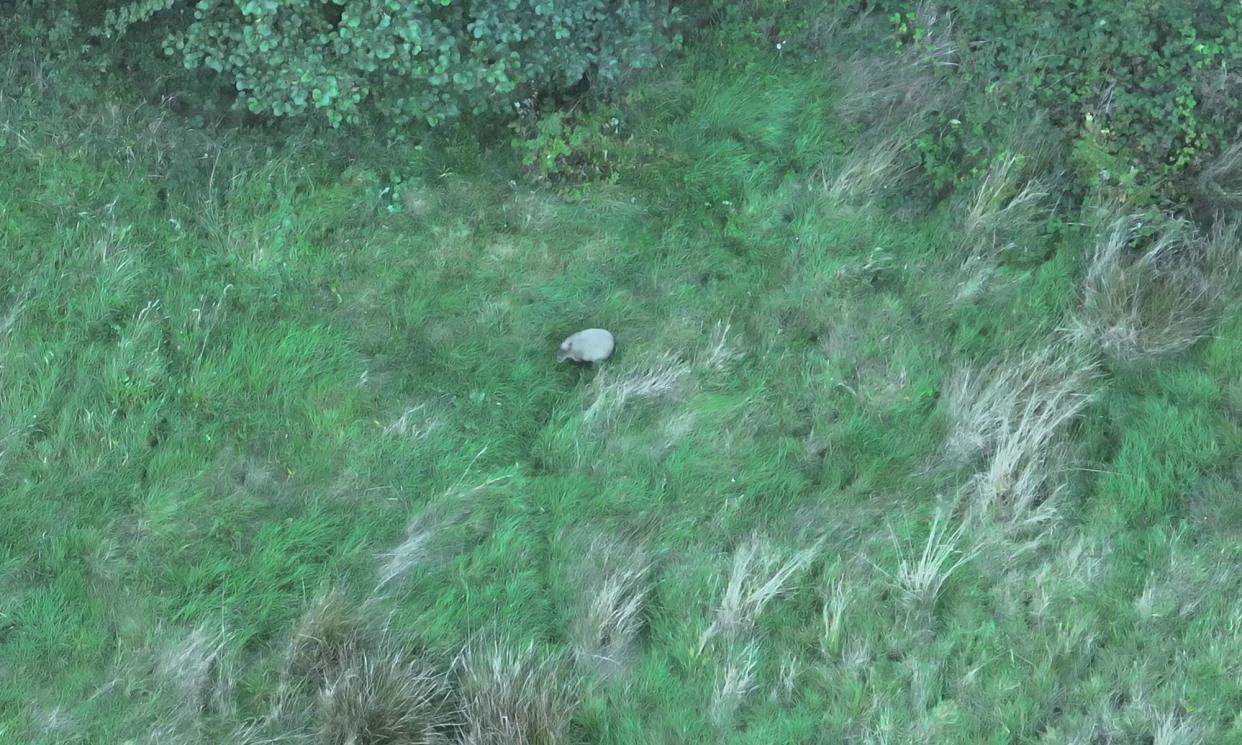Stop that capybara! Search party uses drone to spot rodent that fled British zoo

To catch a rat, many call pest control. But how does one go about catching the world’s largest rodent, the capybara?
Zookeepers in Shropshire are wrestling with that very problem after Cinnamon, one of the furry breed native to South America, escaped.
The 25kg (55lb) rodent bolted from her paddock at Hoo Zoo and Dinosaur World near Telford on Friday when the gate to the enclosure was opened to allow a tractor in.
Now, a search operation is under way led by Will Dorrell, a partner at Hoo Zoo and Dinosaur World, who explained the complexities of the task, which involves using capybara sounds and scents, as well as apples, pears and drones.
“The search operation, we’ve got up to about 20 people involved,” he said. “It’s actually easiest to do in smaller groups for the simple reason you’d end up tripping over each other, so up to about 20 people involved, usually in groups of about five people.”
On Tuesday night, Cinnamon – who is about the size of a labrador – was seen by a drone with a thermal camera just 200 metres from her paddock, right next to the zoo on land owned by the Ministry of Defence.
She had managed to hide in dense thicket, and the zookeepers decided to place live traps rather than catch her by hand and cause further stress.
“We use lots of live traps, which are essentially large cages that the animal will walk into, and then the cage closes behind them, so it’s relatively stress-free for the animal,” Dorrell said.
“Obviously we have got things that we can catch animal with, like nets, but they’re quite stressful, so we try to avoid using those if at all possible.”
More innovative methods have also been used. “We have been playing capybara sounds to try and draw her into an area. But at the moment, that hasn’t been overly successful. She doesn’t seem to be drawn particularly towards those so we’re going to start using scents instead.
“So we’re trying to use the smells of our other capybara, put some dirty bedding down in certain areas and see if that’ll draw her towards it instead … We’re also putting food in the traps and putting food in other places. Various fruits such as apples, pears – sweet things, mainly, that she can’t find in the wild.”
The nature of the capybara is presenting challenges to the search effort, Dorrell said.
“Obviously, we think of them as being tropical animals, living in rainforests and stuff like that. That is true, but, ultimately, a lot of the things that they need are just present in regular forest.
“So the woodland she’s next to at the moment, there is loads of food. There is loads of natural food, loads of grass, loads of waterways, ponds – they’re fantastic swimmers. The first thing they do is as soon as they feel threatened is run straight into a pond. So you can’t really do anything about that, because they’re a lot better swimmers than you – they can swim underwater for about five minutes.”
Related: Shropshire zoo seeks runaway ‘beloved’ capybara
Cinnamon is a year old and was born at the zoo, where her parents and brother also live. The council has been notified, as is required when an animal escapes from a zoo.
While the focus is on finding Cinnamon, Dorrell said they had already reviewed the incident and put in place measures to prevent future escapes.
“She got out, unfortunately, because while the gate was opened while they took a tractor mower in there, she managed to slip around the side of the tractor mower and get out from the open gate, which has never previously been an issue in over 10 years.
“But we’re now reviewing to make sure that it can’t happen again. So, going forward, there’ll be another gate in, something like a double gate, and it’ll be a two-person job as well, to stop this from happening.”


